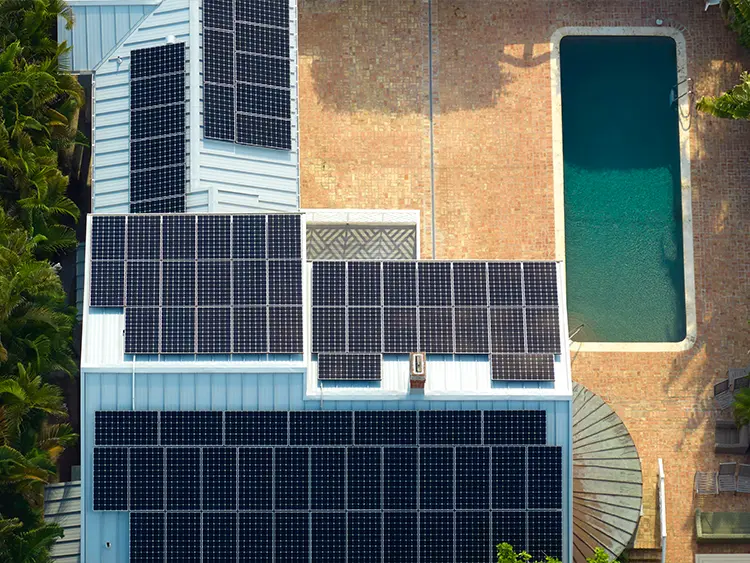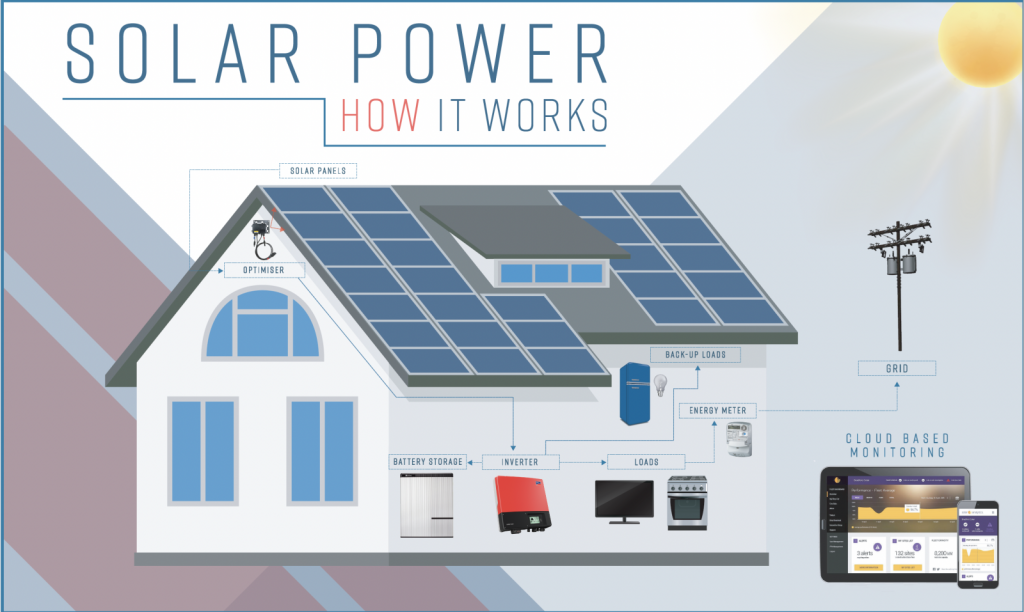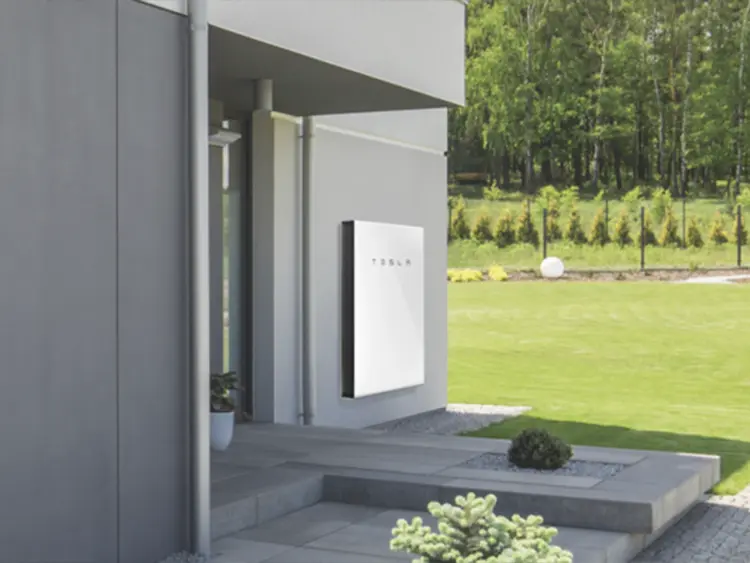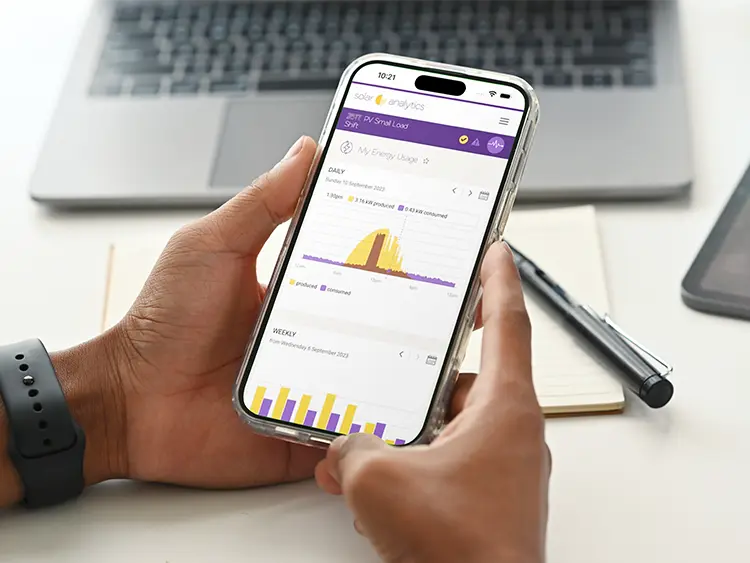How does a solar system work?
Solar System Explained
While it may seem like the technology is complex, it’s actually very easy to understand once you break it down.
- The sun shines on the panels, generating direct current (DC) electricity
- The DC electricity is fed through a solar inverter that converts it into alternating current (AC) electricity
- The AC electricity is used to power your home
- Surplus electricity is either fed back into the grid or is retained in a solar battery system.


Whenever the sun is shining (even during cloudy days), the solar cells in the panels generate electricity. The inverter takes the DC electricity generated by the panel and converts it into AC electricity which can be safely used by your household.
If a residential solar system produces more power than is being used by the home, the surplus energy is fed into the main area grid or retained through home battery storage for solar.
Some electricity providers will measure the amount of surplus energy your panels provide to the grid and give your credit on your bill. The rate at which you are paid is set out by the feed-in tariff.
When the cells are not producing any power, such as at night, your power will either be supplied by the grid or by anything saved in your home solar battery system. An energy supplier will charge the usual rate for any power you use from the main grid.

Quality Panels for Optimal Performance
The effectiveness, dependability, and durability of a photovoltaic (PV) system depend significantly on the quality of its solar panels. Exceptional panels are meticulously crafted to optimise the conversion of sunlight into electricity, generating more power even in less-than-ideal conditions. Their robust design ensures resilience against harsh environmental elements such as UV exposure, temperature fluctuations, and adverse weather, without compromising performance. This durability results in fewer replacements, reduced maintenance, and an improved return on investment over the system’s lifespan.
Moreover, reputable manufacturers of high-quality panels typically provide extended warranties, offering assurance against defects and performance issues. In essence, investing in top-tier solar panels establishes the foundation for a sustainable, high-performing, and financially prudent solar energy system.
Quality racking and mounting
Achieving peak performance in a solar system involves securely mounting solar panels on racking systems, whether on the roof or the ground, depending on the system’s configuration. The quality of the racking is crucial, impacting overall system durability and performance. Key features of high-quality racking include robust extrusions, resistant to corrosion, such as anodized aluminum, ensuring long-term resilience even in extreme weather conditions.
Engineering design is paramount; quality racks exhibit high structural integrity to withstand various loads, including high winds. Additionally, they offer versatility for different roofing types and solar panel sizes, ensuring a secure and optimal fit. Proper grounding and electrical integration are also essential characteristics, contributing to the safety and reliability of the solar installation. Investing in superior racking systems ultimately supports the efficiency and longevity of the solar panels they hold, ensuring optimal performance for decades.


Solar Inverter Solutions
A dependable inverter is paramount for an Australian solar system, particularly considering the demanding climatic conditions.
Tasked with converting DC electricity from solar panels into AC electricity for household use, the inverter’s efficiency significantly influences the overall system performance.
In the Sydney Region, a top-quality inverter is crucial, engineered to withstand elevated temperatures and voltage fluctuations while maintaining consistent performance without the risk of overheating.
Furthermore, it plays a vital role in optimizing energy production by tracking the solar panels’ optimal power point. Additionally, a reputable inverter is supported by a robust warranty and support system, ensuring essential long-term reliability and peace of mind.
Essentially, investing in a premium inverter is indispensable to guarantee the efficient, secure, and enduring operation of the solar system throughout its lifespan.
Net metering - Managing excess energy
When your solar system generates more electricity than your household consumes, the surplus energy can be fed back into the grid. Known as net metering, this system allows you to accumulate credits or receive compensation for the extra energy you contribute to the grid.


Solar Battery (optional)
For individuals aspiring to attain energy independence or secure backup power, the incorporation of a battery storage system proves to be a valuable solution. This innovative system not only allows you to store excess energy generated throughout the day but also ensures its availability during periods of reduced sunlight or in the unfortunate event of a power outage.
By capturing and storing energy when it’s abundant, you gain the flexibility to power your home during less sunny hours or seamlessly transition to stored energy in emergencies. This holistic approach not only boosts your energy resilience but also contributes to a more sustainable and self-sufficient energy lifestyle. Experience the freedom to depend on stored energy whenever needed, ensuring uninterrupted power and peace of mind.
Solar Monitoring: Track your systems performance
Many solar systems are furnished with cutting-edge monitoring systems, granting you the ability to closely track the performance and energy production of your solar panels. These advanced monitoring tools provide valuable insights into your energy consumption patterns and the overall efficiency of your solar setup.
Utilizing real-time data and thorough analytics, you acquire a deeper understanding of your solar system’s operations, enabling you to optimize energy usage and maximize the advantages of your renewable energy investment. Stay well-informed, assert control over your energy consumption, and make informed decisions for a more efficient and sustainable energy future.

